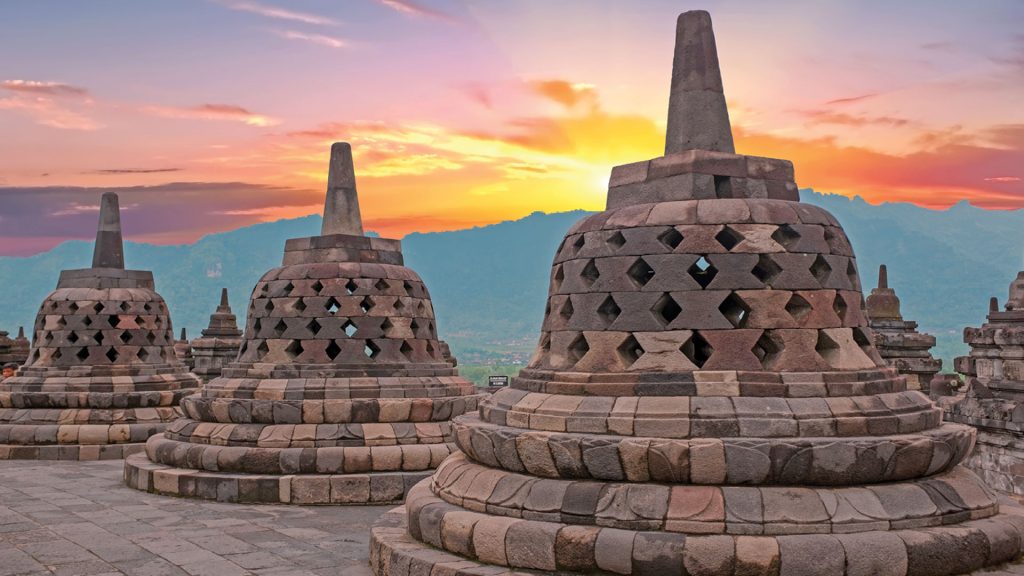The Splendour of Borobudur
Sandip Hor is awed by the largest Buddhist temple on Planet Earth
The majestic Borobudur Temple, which is located in Indonesia, was built around the 9th century. Following a short-lived period of glory, it sank into oblivion for more than a thousand years under layers of volcanic ash and jungle growth – until Java’s 19th century British colonial administration discovered it while revamping the area.
What’s more, the structure had survived many devastating earthquakes and volcanic eruptions in the surrounding region, and was almost intact and as enigmatic as it had been for centuries before…
ARCHITECTURE When viewed from a distance, the huge structure appears as a single large edifice. But actually, the 35 metre high colossus with a square base on each side comprises 10 superimposed terraces – six squares at the bottom followed by three circular spaces, each getting progressively smaller, and with a large single dome adoring the apex.
SIGNIFICANCE There are flights of stairs on all four sides to reach the top. However, it’s traditional to go round the pyramid in a clockwise direction, ascending from one layer to the next. According to Buddhist philosophy, this journey represents the concept of transition from the realities of everyday life to ultimate spiritual enlightenment.
SPLENDOUR Around 72 stupas and 500 Buddha statues are positioned in the open on the circular terraces, as well as inside. The first six levels have enclosed galleries that are entrenched with richly carved bas relief panels depicting tales of Lord Buddha’s life, stories from the great Hindu epic Ramayana and scenes from everyday life.
HINDU SHRINE While Buddhist monarchs built Borobudur, Hindu rulers constructed the Prambanan, which is a large complex of several Hindu temples. Unfortunately, a massive earthquake destroyed all of them and the world forgot their existence until the ruins were rediscovered by the British in the 19th century.
To date, extensive excavation and restoration work have unearthed only a few statues. They include the three large statues dedicated to Lords Brahma, Vishnu and Shiva. These monuments with their elaborately carved tall towers are typical of any Hindu shrine. They bear testimony to past architectural ingenuity and stand imposingly amid a field of stones, which hint at the scale of what’s been lost…
YOGYAKARTA The gateway to these two UNESCO World Heritage Sites is Yogyakarta – home of classical Javanese culture and fine art such as batik. Among its many attractions is the walled area of Kraton, which houses the Sultan’s Palace that was built in the 18th century.
